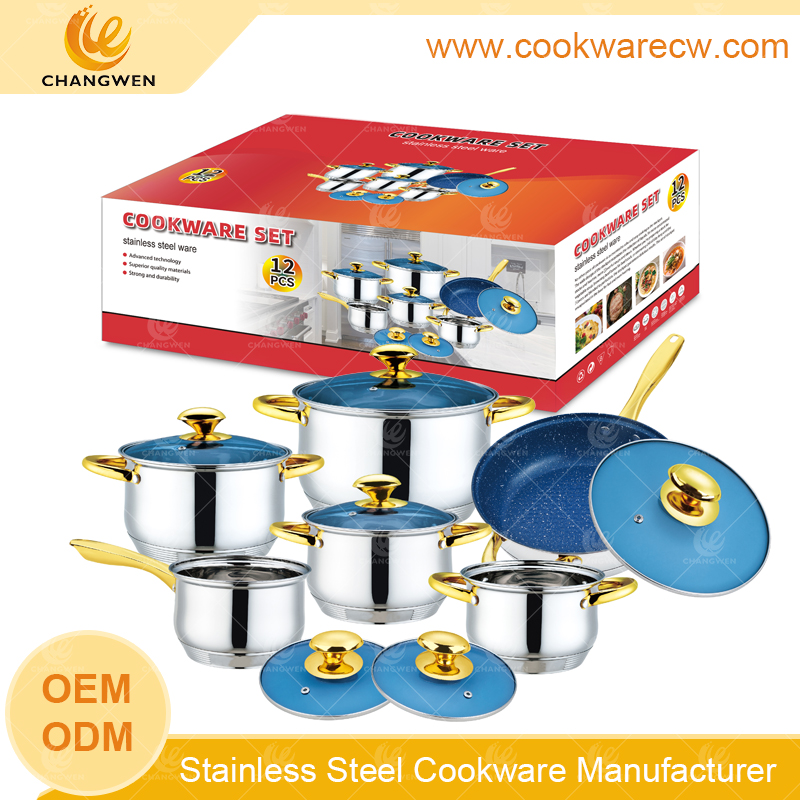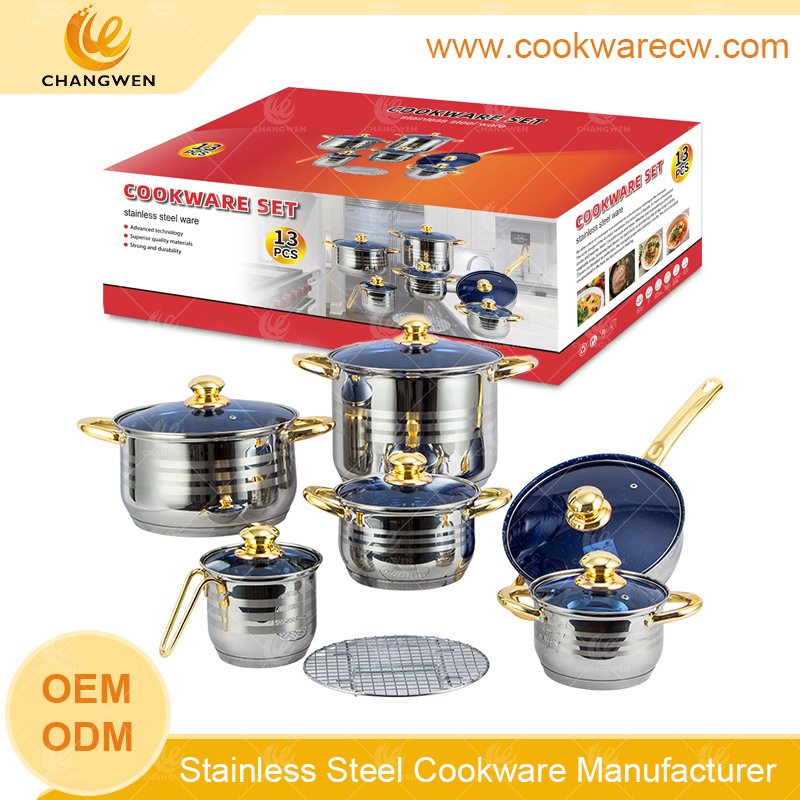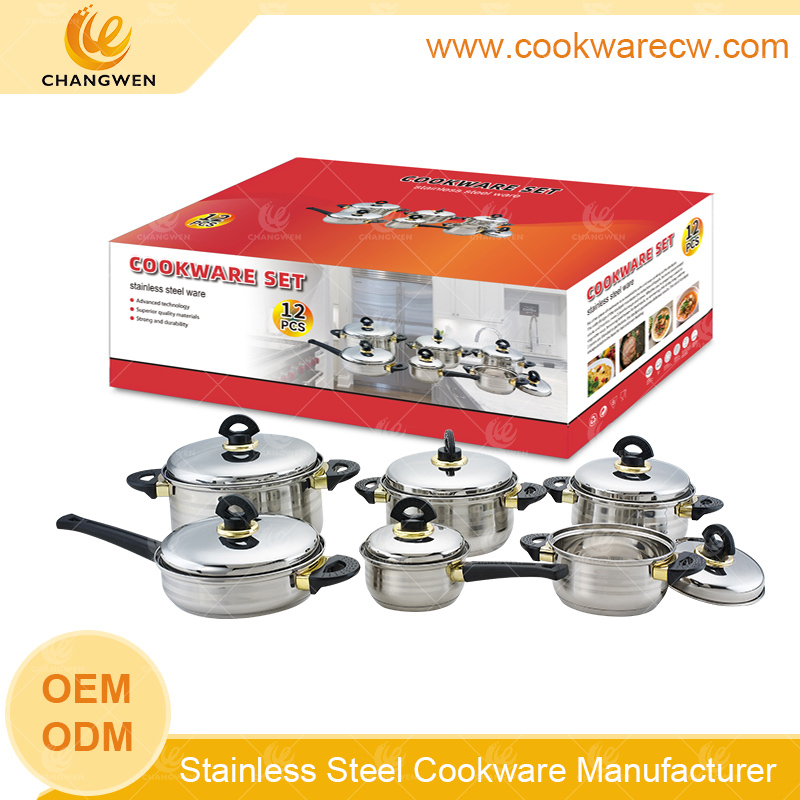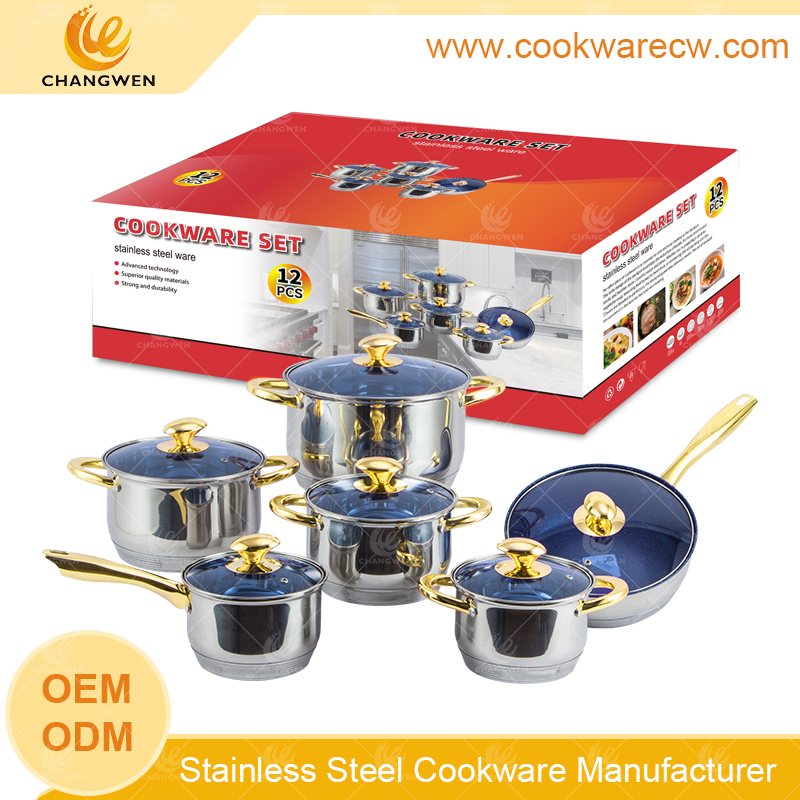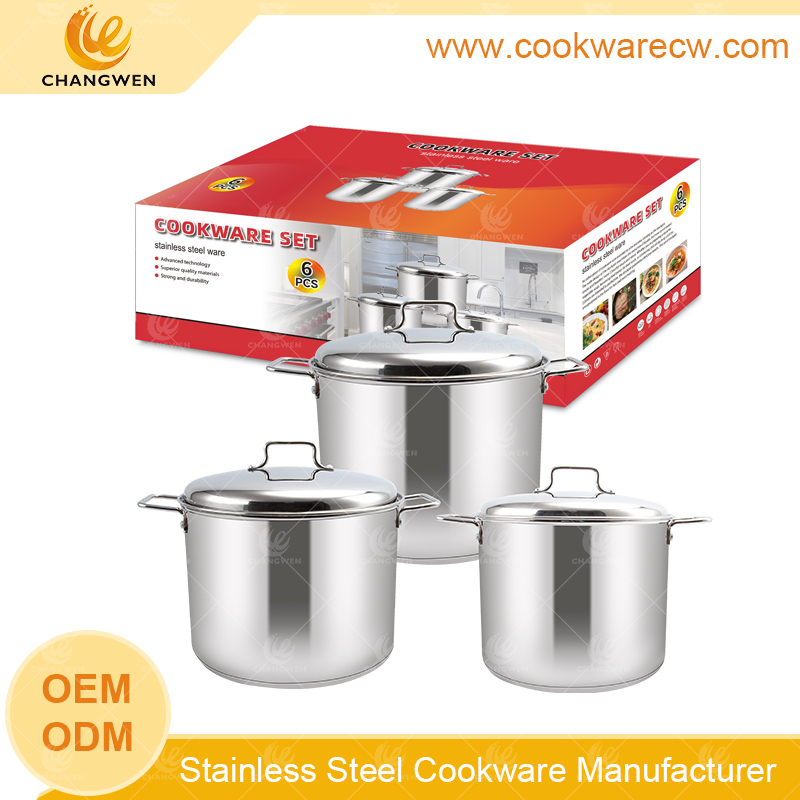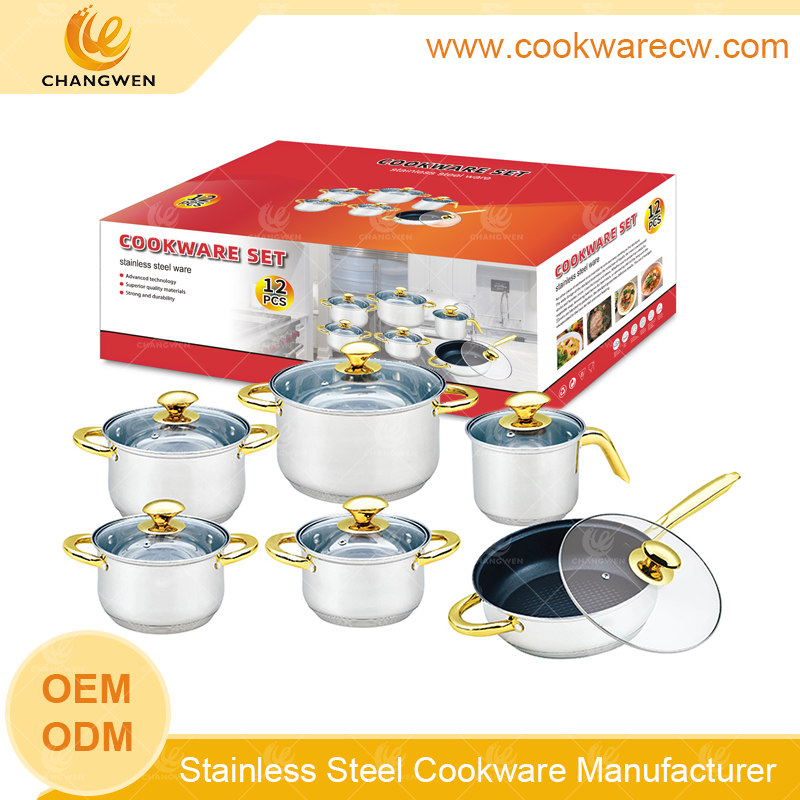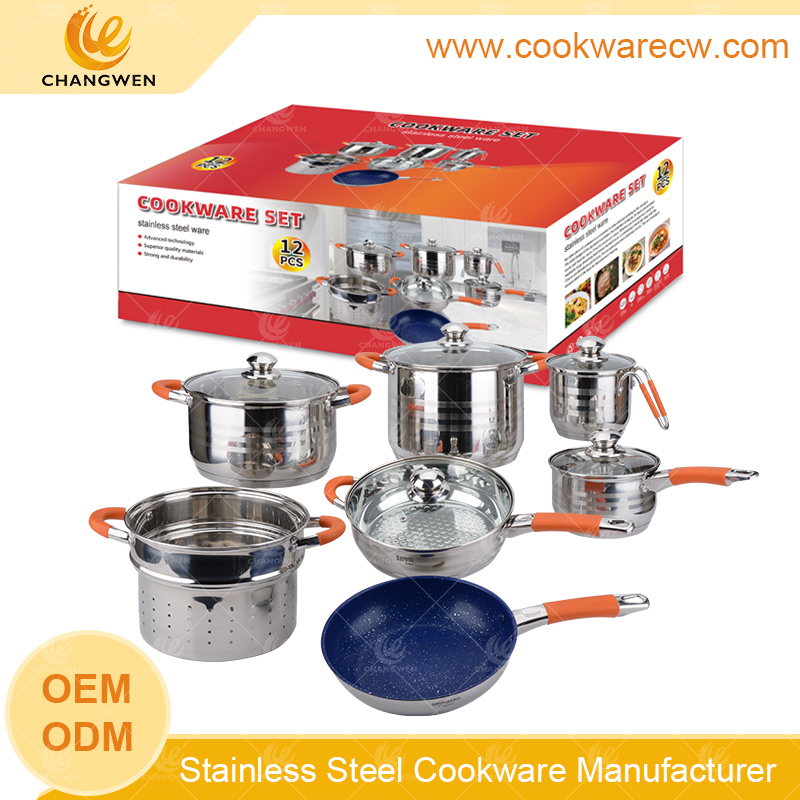Blog & News
We pay attention to the latest news on the product trend of kitchen utensils and continue to develop new products suitable for the market
The difference between 304 stainless steel and 316 stainless steel
Views: 162 Author: China CHANGWEN Cookware Publish Time: 11/22/2023 Origin: https://www.cookwarecw.com
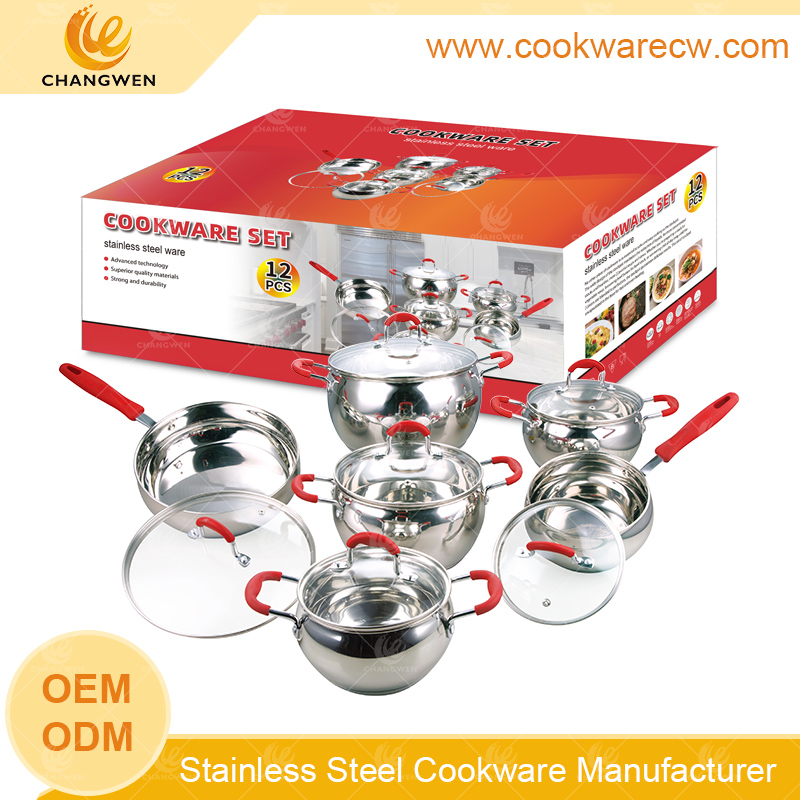
Stainless steel is a commonly used material for cookware today. It is a versatile and durable material that can withstand extreme conditions and resist corrosion. Therefore it is very popular for use in kitchen utensils. There are many types of stainless steel, and 304 and 316 are the two most common types of stainless steel, so what are the differences between them? In this article we will explore the differences between these two alloys.
What is 304 stainless steel?
304 stainless steel is an austenitic stainless steel containing 18% chromium and 8% nickel. Therefore it is also called 18-8 stainless steel. It is the most widely used type of stainless steel due to its excellent corrosion resistance, high ductility and low cost. This alloy is non-magnetic and has good weldability and formability. Ideal for use in food processing equipment, kitchen appliances, automotive parts and more.
What is 316 stainless steel?
316 stainless steel is also an austenitic stainless steel. The main difference from 304 is the addition of molybdenum. Compared with 304, 316 contains more nickel (usually 10%-14%) and molybdenum (usually 2%-3%), which makes 316 have better corrosion resistance. Commonly used in marine engineering, chemical processing plants, medical equipment manufacturing and other industries.
The following is a comparison through the chemical composition table
| Component | 304 SS | 316 SS |
| Carbon (C) | ≤0.08% | ≤0.08% |
| Manganese | ≤2.00% | ≤2.00% |
| Silicon | ≤0.75% | ≤0.75% |
| Sulfur (S) | ≤0.030% | ≤0.030% |
| Phosphorus | ≤0.045% | ≤0.045% |
| Chromium | 18.0%-20.0% | 16.0%-18.0% |
| Nickel | 8.0%-10.5% | 10.0%-14.0% |
| Molybdenum | None | 2.0%-3.0% |
| Iron (Fe) | Remaining | Remaining |
What is the difference between 304 stainless steel and 316 stainless steel?
1. Different chemical compositions: 304 does not have molybdenum added, while 316 does.
2. Different corrosion resistance: 304 contains only 9% nickel, while 316 contains 12% nickel, so 316 has better corrosion resistance and other aspects.
3. Different properties: 304 has better corrosion resistance, acid resistance, alkali resistance, etc., while 316 has better chloride corrosion resistance and heat resistance due to the addition of molybdenum.
4. Different scope of application: 304 is widely used to make pots and pans, etc., while 316 is widely used in the food industry, medical industry, watch industry, etc.
5. Different prices: Since 316 is food grade, the cost of 316 stainless steel is higher because it contains more alloying elements, especially molybdenum.
How to distinguish between 304 stainless steel and 316 stainless steel cookware
To distinguish between 304 stainless steel and 316 stainless steel, you can use the following methods:
1. Logo or label: On purchased stainless steel products, there is usually a logo or label indicating the type of material. This may include a “304” or “316” designation.
2. Appearance and surface: There may be slight differences in appearance between 304 and 316 stainless steel. 316 stainless steel generally has a brighter and smooth surface, while 304 can be slightly cloudy. This is because the molybdenum in 316 makes it more resistant to corrosion and the surface may therefore be smoother.
3. Magnetic test: 304 stainless steel is usually magnetic, while 316 stainless steel is usually non-magnetic. This is because 304 contains a higher proportion of iron, while the molybdenum and nickel in 316 reduce the magnetism. A preliminary distinction between the two can be made by using magnetic testing.
4. Chemical testing: Stainless steel can be tested using chemical reagents to determine its composition. For example, use professional stainless steel potion to distinguish. After dripping potion on stainless steel, the surface of 304 material will generally turn a little red, while the surface of 316 material will appear black.
5. Size and shape: Depending on the specific shape and size, the two can sometimes be distinguished by observation. For example, in some applications, 316 stainless steel may be used for parts of a specific shape or size.
Please note that sometimes appearance or simple testing alone may not be accurate enough, so it is best to rely on material certificates or clear identification provided by the manufacturer when purchasing materials for critical applications.
Summarize
Stainless steel is a metal material with excellent corrosion resistance, aesthetics and heat resistance. It is alloyed with steel, chromium, nickel and other elements. 304 stainless steel and 316 stainless steel are two common stainless steel materials. The differences between them are mainly reflected in chemical composition, corrosion resistance, strength and hardness, price, etc.
JIANGMEN CHANGWEN COOKWARE & KITCHENWARE CO., LTD. is a high-tech enterprise integrating the research and development, manufacturing, export trade and independent brand sales of stainless steel cookware. Its products are exported to more than 100 countries and regions including Europe and the United States, and it is one of the world’s important suppliers of stainless steel products. Please feel free to contact us if you need anything!
Latest News
- What is Surgical Stainless Steel Cookware?
- What is 18/10 Stainless Steel Cookware?
- The Ultimate Guide: Where to Buy Large Stainless Steel Steamers
- Stainless Steel Cookware Manufacturers
- Cast Iron Cookware Manufacturers
- How much does a three-layer steamer cost and how to choose one?
- What Materials are Used in Frying Pans, and Which are Good?
- What material is good for stainless steel frying pan?
- Features of Capsule Bottom Stainless Steel Cookware
- What is the difference between stainless steel 18/8, 18/10, 304, and 306
- The Most Important Step in the Nonstick Frying Pan Manufacturing Process
- where is stainless steel frying pan manufactured
- Explore the Differences Between Cheap and Expensive Stainless Steel Cookware
- Advantages and Disadvantages of Chinese Cookware
- Why choose 180/8 material for stainless steel cookware?
- What are the purchasing channels for cookware in Mexico?
- Opening a cookware store in Mexico, how to purchase goods
- Why choose stainless steel cookware when exporting to Mexico?
- A Deep Dive into Stainless Steel Cookware: Comparing 304, 316, 430 and Three-layer Stainless Steel Pots
- A Comprehensive Guide to Cookware Materials and Their Pros and Cons
 English
English Español
Español Português
Português
